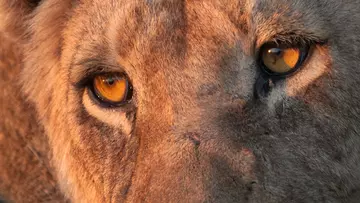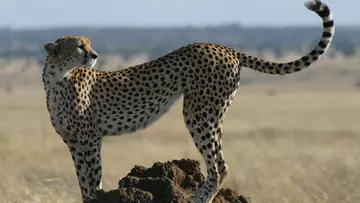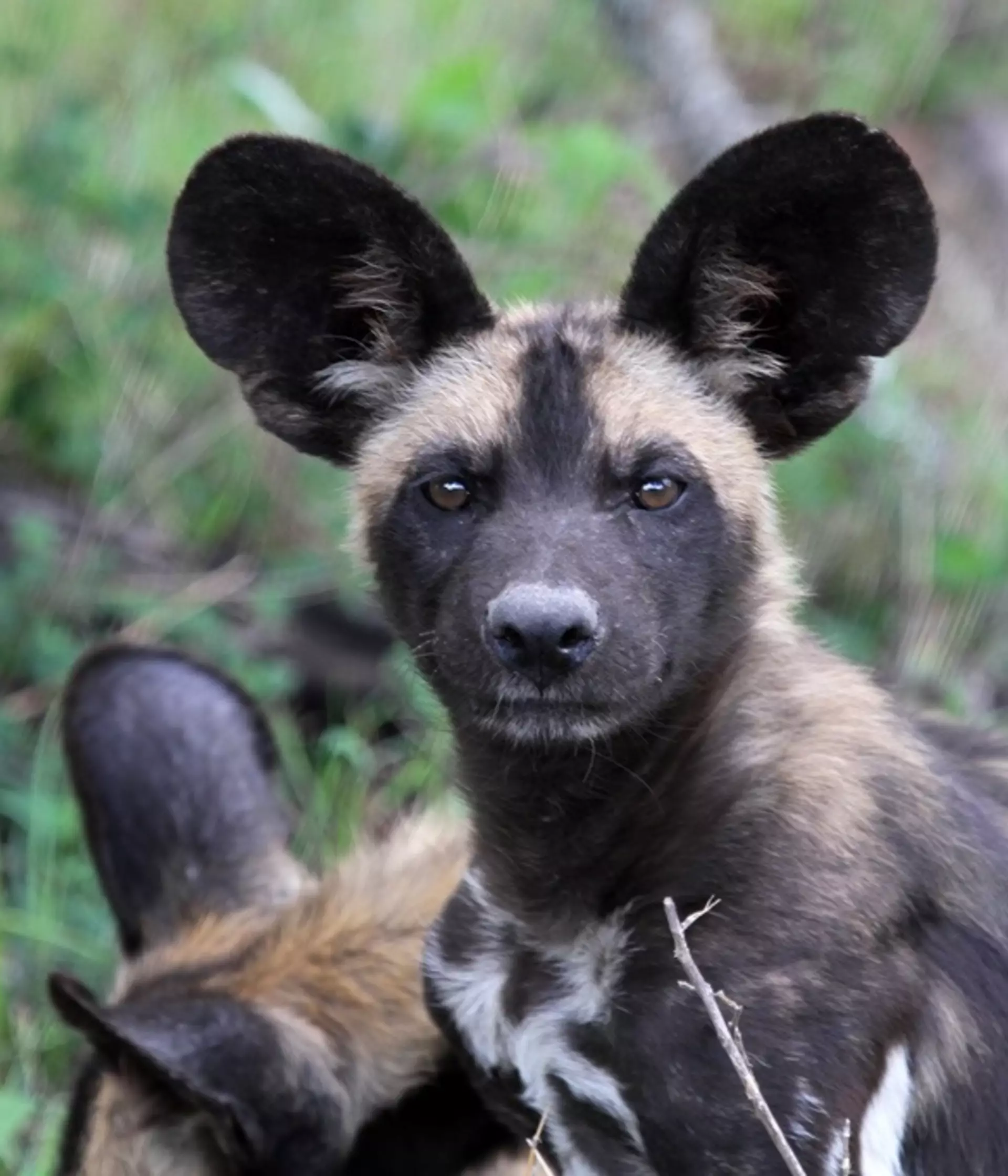
ZSL
Zoological Society of London
ZSL-led study shows how protecting threatened species such as cheetah and African wild dogs needs an integrated approach, with support for local communities at its core.
In research published this week (Monday 24 January 2022) in Frontiers in Conservation Science, conservation experts from around the world have come together to propose a ‘theory of change’ which they hope will help tackle complex issues associated with living alongside large carnivores such as lions, leopards, cheetahs, hyenas and wild dogs on the African continent.
The new study, led by ZSL (Zoological Society of London), brings together a multinational team with representatives from 16 organisations from Tanzania, Niger, Ethiopia, Namibia, Kenya, Botswana, UK, Norway and the US. It highlights how an integrated approach to issues of co-existence is most likely to succeed when national and international governance work together and empower local communities to live alongside and benefit from supporting wildlife.

Recognising that each country across these landscapes is politically, economically, culturally and ecologically diverse, the paper provides a framework designed to be easily adapted to different African dryland communities.
Across the world, three-quarters of the terrestrial environment has been drastically altered by human actions, largely due to agriculture and industry such as mining, logging and infrastructure. The destruction of natural habitats has squeezed remaining wildlife into smaller areas, and the issue of human and wildlife conflict - particularly for animals with vast ranges such as cheetah and wild dogs - is a major challenge.
With a human population set to double by 2050 compounded with the growing impacts of climate change, interactions between people and wildlife in Africa are increasing. With this comes higher risks of predation of livestock, pressure on resources, damage to crops, and even death and injury.
Co-lead author and Director of Science at ZSL’s Institute of Zoology, Sarah Durant said: “Living alongside large carnivores is challenging. The communities that share their land with wildlife in Africa’s drylands can be some of the most marginalised and vulnerable in the world. Households living on the edge cannot afford to lose livestock to predators, and may retaliate against them, contributing to the global decline in Africa’s large carnivores.

“This strategic approach can be adapted to different contexts and used to enhance wildlife recovery in and around protected areas. Our study sees people and wildlife as interconnected, and not separate from each other, and identifies the need for communities to be involved in decision making over wildlife not only locally, but also at the larger national and international scales required by large carnivores.”
For the ‘theory of change’ to be successful, wider, global structures must recognise the impacts borne by local communities living alongside large carnivores and offer support, including finance, to foster a sustainable co-existence that can benefit both wildlife and people.
Professor Durant continued: “Large carnivores living in these regions play an important role in their ecosystems, and are of high value to people all around the world. This value must be translated to support the livelihoods of people who live alongside them. As the planet warms, there is also an opportunity to develop Nature-based Solutions to the climate crisis that can help improve the resilience of communities while helping to reduce biodiversity loss.”
Co-lead author, postdoctoral associate at ZSL’s Institute of Zoology, and Teaching Fellow at SOAS University of London, Dr Agnese Marino said: “Coexistence between people and wildlife is by definition a local, situated experience, but it takes place in a highly interconnected world where multiple meanings and interests around the use and protection of wildlife encounter each other. Understanding coexistence requires us to constantly shift our focus between the local, the global, and back again. It requires us to examine the way that culture and politics mediate local experiences of coexistence, whilst also being aware of the ways that historical and ongoing largescale processes shape local relations with the environment. This dual awareness can facilitate an improved understanding of the governance structures need to support communities who share their landscape with wildlife.”

Co-author Abdoulkarim Samna of the Direction de la Faune, de la Chasse et des Aires Protégée in Niamey, Niger said: “Large carnivores are an important part of our ecosystem and way of life here. A life without them would be unimaginable. However local people must protect their livelihoods, including livestock and we hope that the framework we have suggested here, will support both causes and work towards better harmony between people and wildlife.”
Drawing on the experience of scientists and practitioners who have lived and worked in different regions across Africa, the study explored a complex range of conservation, political and social challenges, and identifies three key areas which must be actioned for the ‘Theory of change’ to work. They are:
• Harmonised and coordinated governance spanning geographic borders that empowers and engages local people living with wildlife
• Sustainable natural resource management that can be effective at the large landscapes needed by large carnivores
• Transforming the relationships between people and large carnivores in ways that provide benefits to the presence of large carnivores while minimising the costs
Africa’s dryland landscapes are known for their range of often threatened, large predators. The African Range-wide Cheetah Conservation Initiative (CCI) works with multiple stakeholders to conserve cheetahs and other large carnivores across the diverse landscapes. For over 15 years, the project has been working to safeguard and restore connectivity of natural habitats and supporting coexistence between people and large carnivores. The team works in five large transboundary landscapes: the western KAZA and Mussoma-Liuwa in southern Africa, the WAP protected area complex in west Africa, and the Serengeti-Tsavo landscape in eastern Africa.
ZSL is urging governments to put nature at the heart of policy-decision making, prioritise biodiversity loss and recognise its interconnections with other environmental issues such as climate change. You can support ZSL's global science and conservation work by donating.
Donate to ZSL
Climate change and human activity have pushed our precious planet to its limit, causing the devastating loss of so many habitats and species. From lab to field, hands on and behind the scenes, we’re leading the future of conservation, shaping agendas and influencing change to support better life, health and living for people and wildlife.
